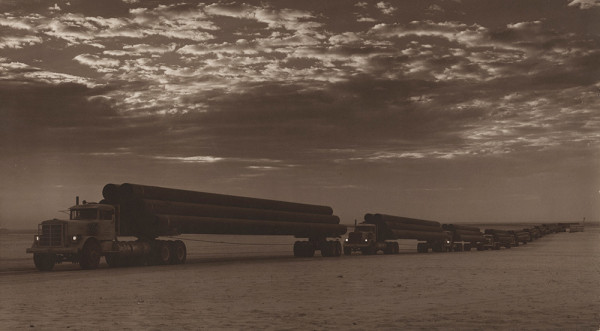Content means everything to the success of your website.
In the search for finding better content that converts, I’ve tried numerous different mediums in the hope that they will perform better.
It’s definitely a good exercise to see ways you can improve your content by exploring different content types. This variety in content is great for your brand. And makes you more accessible to a wider range of readers.
When you don’t have a variety of content for your audience, you won’t get the traffic numbers you want. As you’re trying to figure out new ways to bring in more traffic, consider switching the types of content you’re using on your blog.

1) Videos
Did you know that every day 100 million people watch an online video? With people watching so many videos, you should be using them too. Especially since videos increase people’s understanding of a product or service by 74%.
Creating videos is easy if you have the right equipment.
If you don’t, there are many people online who would love to create videos on anything you please. It’s money well spent when you consider that people will be more likely to engage with your blog posts which could help in search engine rankings and conversion rates.
If you do end up getting a video made, do your best to make it evergreen content. At the very least, keep it versatile so your video isn’t limited to only one specific purpose in one specific situation. Maximize the value of your video investment.
Don’t have a budget to get your own video made? No problem. Using other people’s videos is a viable alternative. Just make sure it’s relevant information and something your readers/consumers will really benefit from. And obviously, give credit where credit is due.
2) Memes
Who doesn’t love a good meme? Internet users want more than just information online. They also want to be entertained. Memes do exactly that, and are share-worthy on social media.
When people enjoy a meme and think their social media followers will like it, they will share it with them. This improves your brand awareness and can bring more people to your site to learn more about your services and products.
However, speaking in terms of content lifespan, a meme is used best to follow trending news and information. Is a silly cat meme really going to be what you want your consumers to read on your evergreen content 5 years from now? I hope not.
3) Images
Content should surround a good image.
The image is what most people look at first, so don’t be afraid to use one or more. Just make sure the images are relevant and attractive. Low quality images that are blurry or unrelated to the content will only turn people away.
Having good, high quality images is more important now than ever before with the increasing prevalence and decreasing cost of high definition computer monitors. Low quality images are a good way to make your site look spammy and low value. Avoid low quality images like the plague.
Here’s a great infographic that breaks down the importance of images on your website.
4) Infographics
Infographics are images that provide people information in an easily digestible way.
The text is large, the images are large, and it paints a clearer picture of the message you’re trying to deliver. Really attractive infographics that provide great information are also share worthy on social networks, so keep that in mind as you think about making one for your blog.
Here’s a great example of what an Infographic does and how you can make an effective infographic yourself. By the way, Visual.ly is a great website that I suggest you explore, at the very least for design inspiration.
5) Guides
To boost your authority in your industry, publish a guide on your blog or offer it through email as part of your content marketing strategy.
This guide should provide step-by-step and detailed instructions on how to do something your audience is interested in learning. The guide should be something that people will want to reference and share with others.
The guide can be about how to use your products effectively, or how to do something that will enhance the services you provide.
6) Opinion Post
Express your opinion at times, even if it’s not what the majority believes. This will bring attention to you and your business’ brand and give your site a voice.
Just be careful that you don’t go overboard with it, which could cause consumers to think negatively about you and your business.
7) Lists
You’ve seen these types of articles all over the Internet. Actually, this post is a list article! People love this type of content because they don’t necessarily have to read the entire article.
They can just look at each thing on the list to get the gist of what they can learn from it. If they want more information, they can read what comes after each number. Lists are a great way for readers to get quick information while not committing to reading an entire article.
8) Link Pages
Many people don’t like to do link pages because they feel as though they are sending their readers away.
That’s not really the case though. You receive recognition when you show people sites that can truly help them and there’s no way you are an expert at everything. Don’t be afraid to curate valuable content or resources for your readers.
You shouldn’t list competitors of course, but giving them valuable resources they can bookmark is something you should be happy to do. People will appreciate it and will probably come back to your blog for more helpful information.
9) eBook
An eBook is a great type of content that will enhance your brand’s exposure. You can market it in different ways than your blog posts. eBooks can be given away in exchange for an email address for email marketing purposes or it can be sold to consumers.
10) Podcasts
Some people don’t have time to read a blog, but they have plenty of time in the car to listen to a podcast. With a podcast, people can download it and listen to you on the go. You can also publish it on your blog and people can listen to it as they are doing something else. Having a podcast series is a great way to attract more people to your site, so you can build a following.
Conclusion
There are many different types of content you can reach for from your toolbox. Take note of some of the ones listed above and try implementing ones you may have not used already.
Try some new types of content that are more interactive. This is a great way to engage your audience and will make your site or blog seem more personable and easier to connect with.
Have you tried any of these types of content? Which do you see a positive result from? What type of content will you try next? Leave a comment to let us know!
